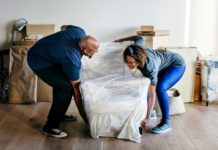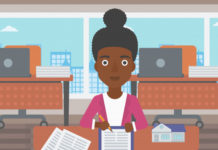Every year, millions of kids are injured or exposed to toxins right under their own roof. You’ll need to learn how to childproof your home healthier and keep your family safe.
Your home should be a haven: the one place where your children will be protected from harm. Still, more kids get hurt at home each year. Young children can spend up to 90 per cent of their time indoors, so a healthy home environment is critical. Yet many hazards aren’t obvious. Here is how to childproof your home:
Guard Against Scalding
You probably know that your young child could drown in your basin, but she’s just as likely to get seriously burned. Hot water can burn skin just like fire. A baby or toddler who is exposed to 140 degrees F water can be scalded in less than five seconds. Hence, always test the water temperature yourself before placing your child in the basin.
Watch Out for Windows
Every year, kids end up in the emergency room after tumbling out of a window/stairs. It’s crucial to install window guards or window stops on all upper-level windows. Babies and toddlers can be strangled by cords on your curtains, so place cribs and other furniture away from windows. It’s best to use cordless window coverings in kids’ bedrooms.
Foil Other Falls
Falls are the leading cause of unintentional injury for kids but your child’s risk of being hurt in a fall—downstairs or off furniture. Toddlers are still mastering the whole walking thing, and they lose their balance a lot. Therefore, cushion corners and edges of tables and fireplace hearths with padding to protect your child from banging her head on them if she topples over.
Renovate Carefully
When lead dust gets stirred up during a renovation (or when the paint starts to chip), the toxic particles put your child at risk of developmental and learning problems. Thus, it’s important to hire a contractor who’s certified in safely removing leaded materials.
Be Prepared for Fire
Kids ages 5 and younger are twice as likely to die in a residential fire than older children or adults because it’s harder for them to escape on their own.
It’s critical to have a smoke alarm on every floor as a way to childproof your home. Remember to test them monthly. You should also have one multipurpose fire extinguisher.
When using an extinguisher, remember PASS: Pull the pin. Aim at the base of the fire. Squeeze or press the handle. Sweep from side to side at the base of the fire until it goes out.
Monitor Carbon Monoxide
Low to moderate levels of this colourless and odourless gas can cause flu-like symptoms (without fever). But as levels increase, the toxic effects of carbon monoxide (CO) can be deadly, especially for children, because the gas prevents oxygen from getting to the heart and brain.
Carbon monoxide is produced by the incomplete burning of fuels, including coal, wood, charcoal, oil, kerosene, propane, and natural gas. The most important way to prevent carbon monoxide poisoning is to make sure that all your fuel-burning appliances are working properly. However, CO can also be created by equipment like portable generators, cars, and power washers that are powered by an internal combustion engine.
Ban Bugs Safely
Mice, cockroaches, ants, and other pests are annoying, but they’re usually not nearly as big a health threat as the toxins that get rid of them. Pesticides contaminate the air your child breathes and the floor she plays on and increases her risk of developing neurological problems and cancer.
Instead, seal off holes in your floors and walls, weather-stripping doors and windows, and keeping your kitchen clean and free of food particles. If you must use pesticides, buy the smallest amount needed, and choose gels or baits instead of sprays.
Avoid Allergens and Irritants
Pound for pound, children breathe more air than adults do, so they’re especially vulnerable to the effects of indoor environmental pollutants. Making your home a smoke-free zone is obvious; stop more insidious threats, like mould and remove any water-damaged carpet and furniture promptly. Open doors and windows when cleaning, painting, or laying new carpet, and change furnace filters as recommended.
Pay attention to what you bathe and launder with too. Somebody washes and laundry detergents are made with chemicals that may irritate sensitive skin.
Lock Up Poisonous Products
That means not only cleaners, medications, and caustic cosmetic items like nail polish remover but also perfume, bath oil, mouthwash, aftershave, and vitamins. More than a million kids are poisoned by ingesting common household items every year.














